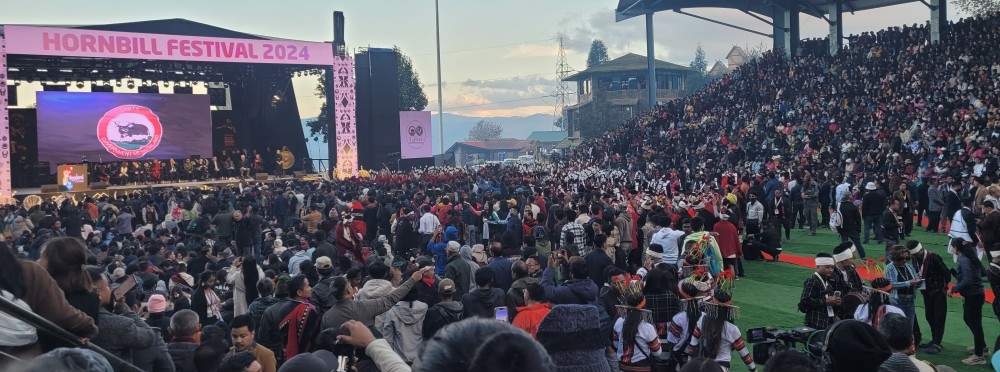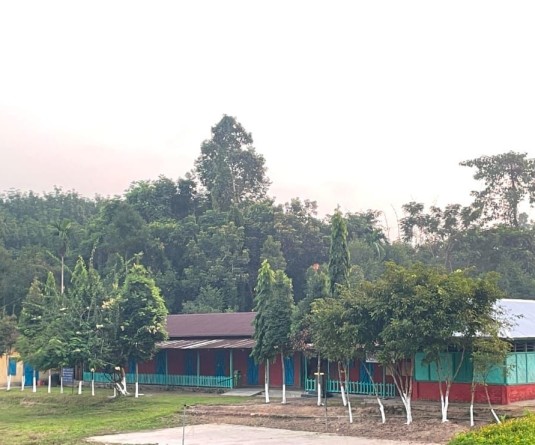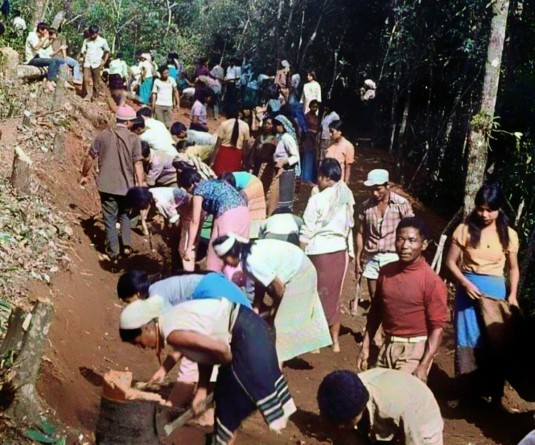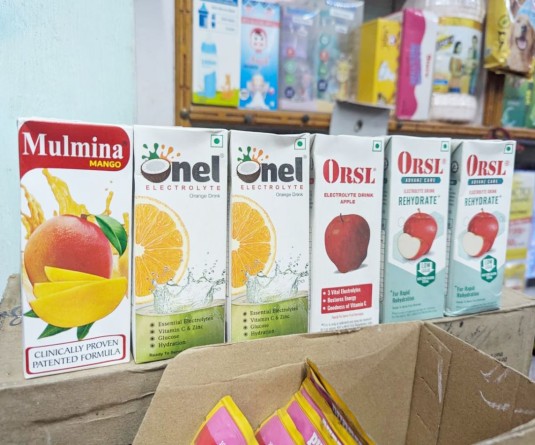
Morung Express News
Kisama | December 4
The Hornbill Festival, which was launched in 2000 and has since been dubbed the "Festival of Festivals," has undeniably become a global phenomenon. This annual 10-day event, often described as a celebration of Nagaland’s rich, colorful heritage, has attracted international attention and put the state on the global tourism map. It offers a platform for cultural exchange and economic opportunities, drawing visitors from across the world.
However, as the festival has expanded in scale and grandeur over the years, growing concerns have emerged among locals about its potential impact on Naga culture. Moreover, with its increasing commercial focus and overstated spending from the state’s coffer, some are questioning whether the success of the Hornbill Festival is worth the price being paid.
Is it worth the cost?
Speaking to The Morung Express, a high-ranking government official acknowledged the tireless efforts of the state government in promoting the festival, which has gained international acclaim. “The festival has garnered worldwide recognition and has catapulted our small state onto the global tourism map. This is a significant achievement and something to celebrate,” the official stated.
However, the official, who wished to remain anonymous, expressed concerns about the growing challenges associated with the festival. “As we dig deeper into the underbelly, the festival is plagued with many issues,” the official remarked. He pointed to the tension between ‘modernity and tradition’ and the issue of ‘religion and culture,’ specifically referencing the rampant sale and consumption of liquor at the festival site.
The official also raised concerns about the environmental impact of increased tourism, the shift in focus from cultural significance to economic gains, and the exploitation of local artists and craftsmen. “The caravan that has rolled in is here to stay—and it’s only getting bigger,” he warned. “Amidst all the celebrations, there is a growing sense of unease. The question is: ‘Is it going to be worth it?’”
Polluting Naga culture?
A keen observer of the Hornbill Festival noted that, with the state government as the main organizer, many government departments become preoccupied with the event by late October, causing public welfare activities to come to a halt. Regarding the cultural presentations, especially during the inaugural and valedictory functions, the observer criticized the inclusion of English songs and modernized traditional dances. He argued that tourists attend the festival to witness authentic Naga culture and traditions, not a fusion of contemporary influences.
“It’s essential that respective tribal bodies have cultural committees that monitor and derecognize groups that dilute Naga culture with modern touches,” the observer suggested. He also emphasized that the government should focus on providing infrastructure, security, and connectivity, while private sector participation should be encouraged to enhance the festival’s efficiency and economic benefits. More collaboration and outsourcing could help alleviate the financial burden of organizing the event, he added.
The threat of cultural confusion
A senior journalist, who has been covering the Hornbill Festival since its inception in 2000 at the Local Ground in Kohima (Khouciezie), reflected on the changes over the years. He recalled the early days when the festival was a modest three-day celebration aimed at uniting the indigenous people of Nagaland and showcasing their rich traditions and cultures to the world. The venue was later moved to the scenic Kisama, where traditional Naga morungs were constructed to represent the state’s districts, offering a prime attraction alongside cultural performances and traditional games.
However, as the festival gained momentum and received international attention, the journalist observed that the focus on Naga traditions was being overshadowed by regional, national, and international displays. “The festival’s opening and closing ceremonies, which were once the primary attractions have sadly become a showcase of fusion, with more emphasis on modernity,” he noted.
Through interactions with tourists, the journalist found that many visitors had expressed disappointment with the dilution of culture. “Tourists come to witness the age-old traditions and culture of Nagaland, not to experience the cultures of other countries,” he said. “At this rate, I fear that not only tourists but also Naga youth may begin to confuse true heritage with this fusion, eventually leading to the loss of the true essence of the Hornbill Festival.”
As the Hornbill Festival marks its 25th year, many observers believe it stands at a crossroads. Will it remain a cultural celebration that honors Naga traditions, or will it transform into a commercialized spectacle that risks undermining the heritage it aims to showcase?






